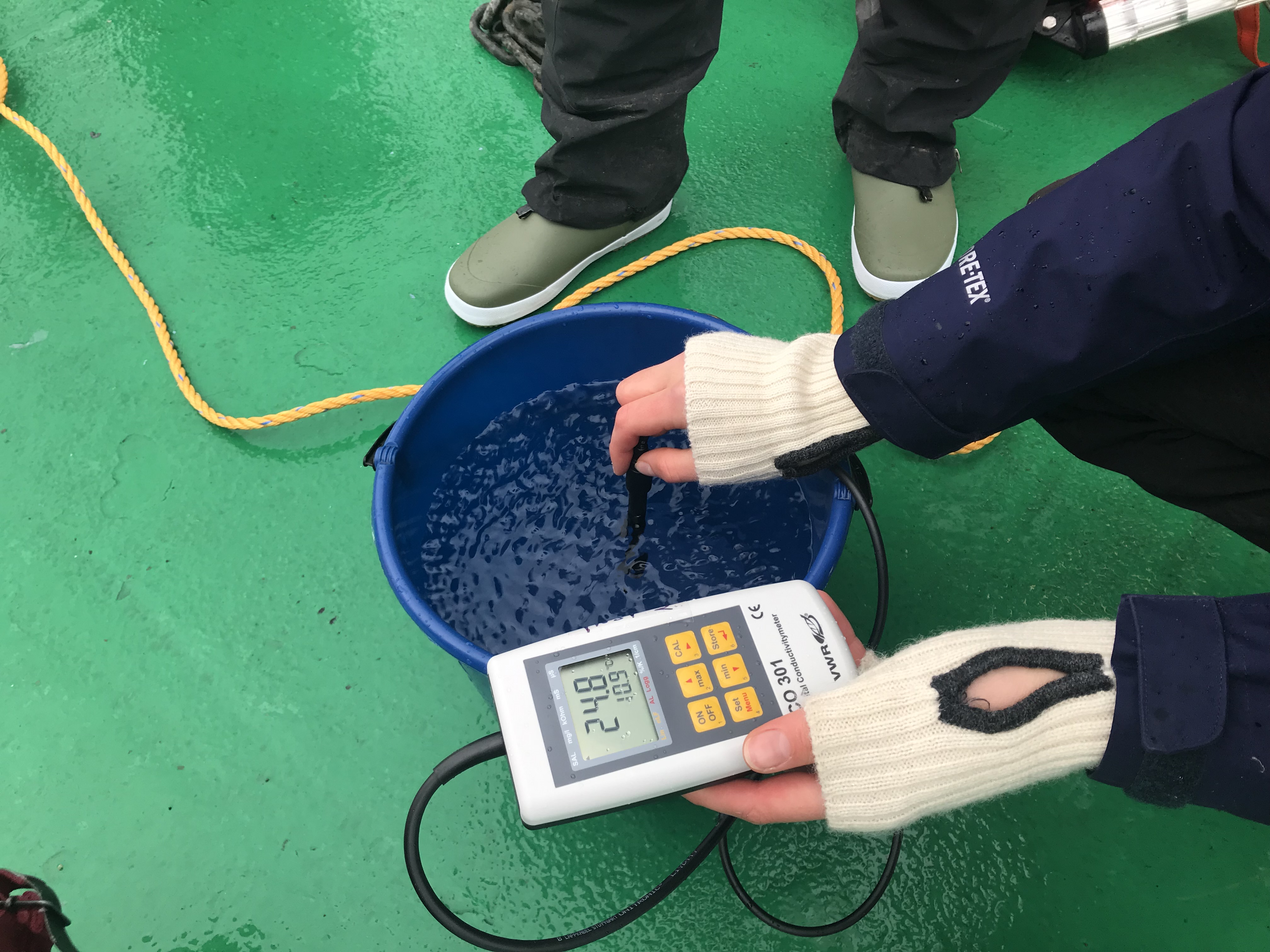
Wave watching in a bucket
On the GEOF105 student cruise that I was lucky enough to join like I did last year, I happened to observe what you see in the picture above: Standing waves in a bucket! And this isn’t a staged photo, this is me taking a picture of a student at work.
We are looking at the bucket the students use to take surface water samples which they measure on deck. The bucket happens to stand just above the engine room. Which leads to vibrations. Which, in turn, leads to waves. Many different kinds of waves! In addition to what you see above, we find, for example, plain circular waves. They might look like they do in the picture below:
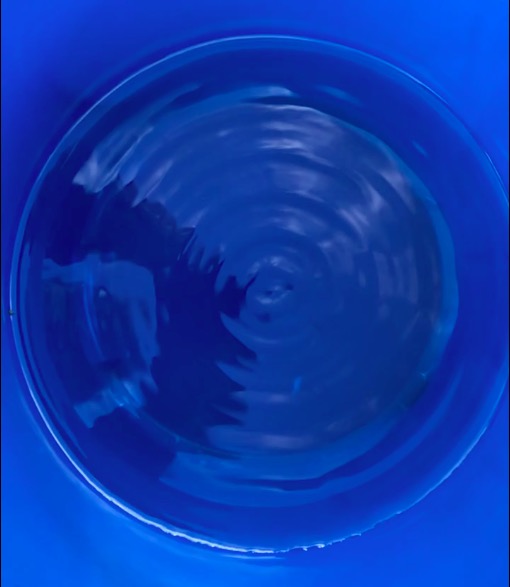
And here is a short movie of the waves, first in real time, then in slow motion.
Sometimes the circular waves also have other wave lengths.
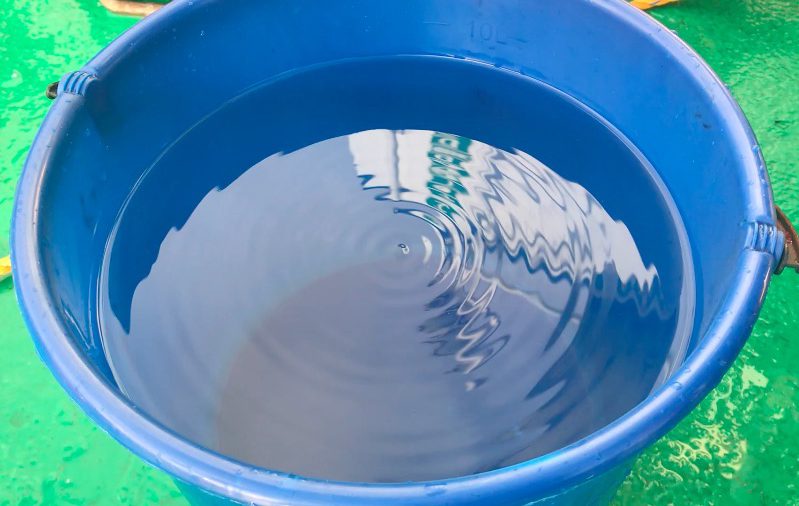
The next pattern that develops from a monopole (like the one you see above) is my favourite: A monopole with higher order stuff developing at the edge of the bucket.

Watch the movie below to see it in motion (first at real speed, then in slow motion).
The next step, then, is water that almost looks as if it was boiling. Like so:
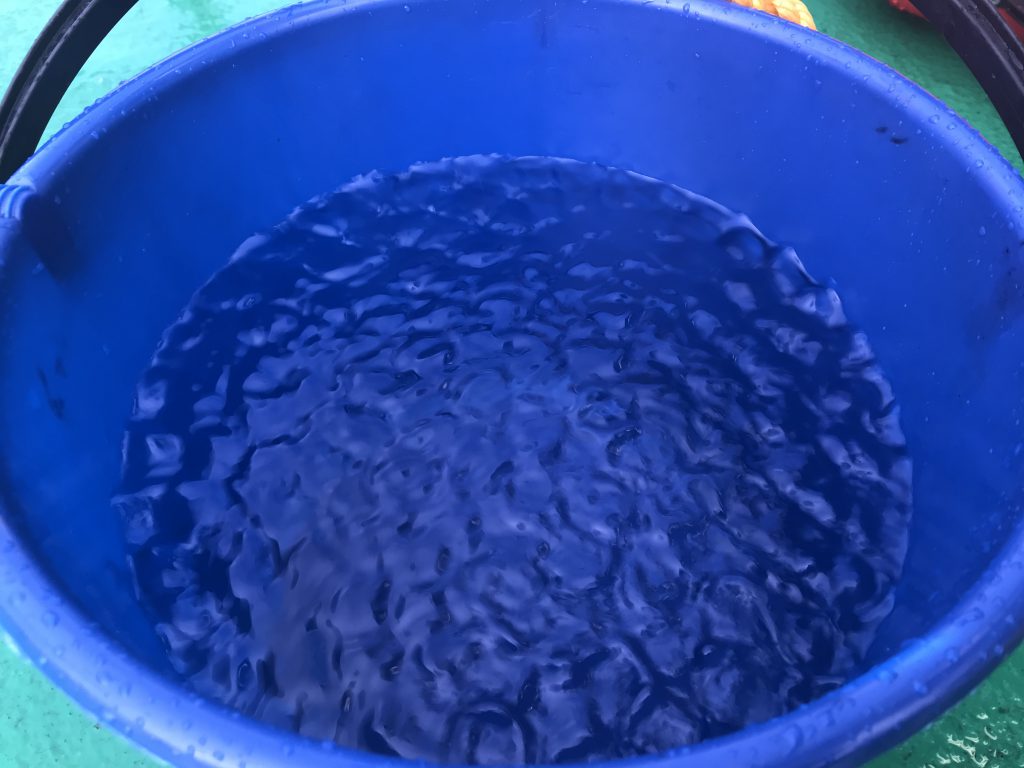
Here is a movie of the bucket with the “boiling” wave pattern, again in real time first and then in slow motion.
The movie below shows a close-up of some of the waves in the “boiling” state, when there was enough energy in the system to throw drops up in the air. The movie goes from real time to slow motion. Careful when you play it, I left the sound in in order to show how the frequency of the waves is the same as the frequency of the engine. (And because of the annoying sound, it doesn’t start up automatically, so you have to click to play)
Here is a movie that shows the bucket in different positions, shot continuously to show how quickly the wave pattern develop and also how close together the different spots with the different pattern are located. Thanks for playing along, Kjersti!
So clearly the location has an influence on what wave pattern develops. But what are other important factors? We tested material, shape and size of the container.
A small plastic bucket which is almost cylindrical, for example. Guess what happens?

We can get the same wave pattern as in the large bucket! The movie below shows three different wave pattern. When the frequency suddenly changes that’s because the movie is in parts played in slow motion.
As to material: It seems to be important that it’s flexible. Iron cast pans don’t work (yes, there is water in it!), neither do metal lunch boxes…
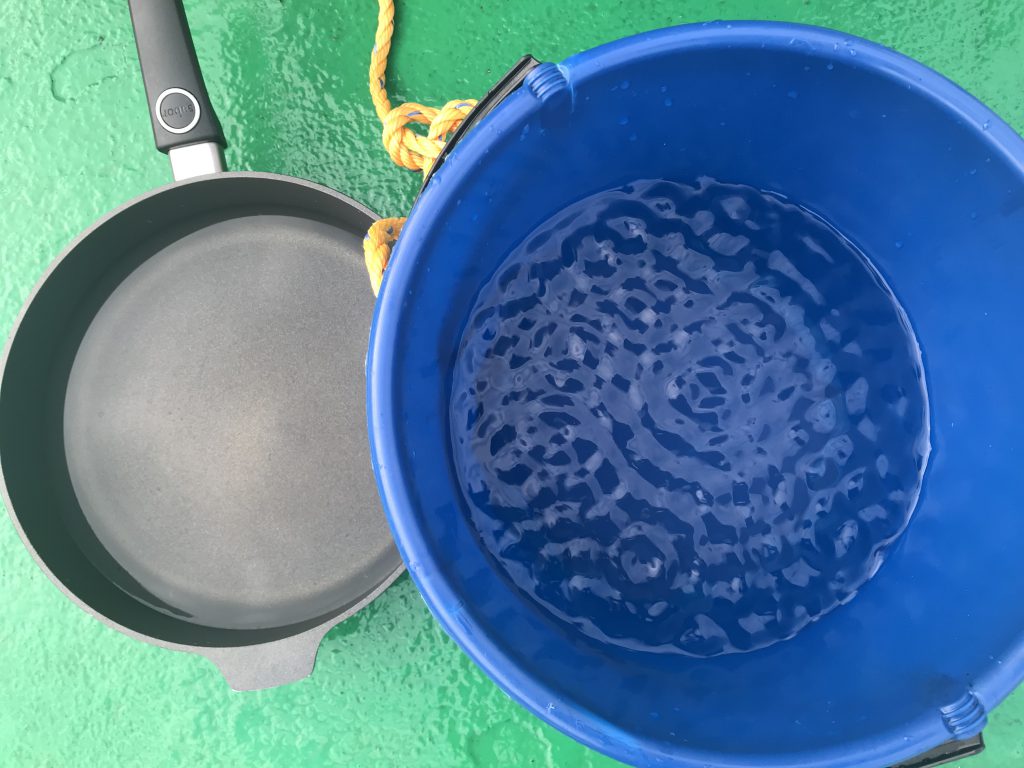
And round shapes make nicer waves. But the rectangular vanes of the surface drifters (aka paint roller trays) also make pretty pattern! But now the waves are, unsurprisingly, only parallel to the edges of the tray.
Yep, this is the kind of stuff that makes me really happy! :-)
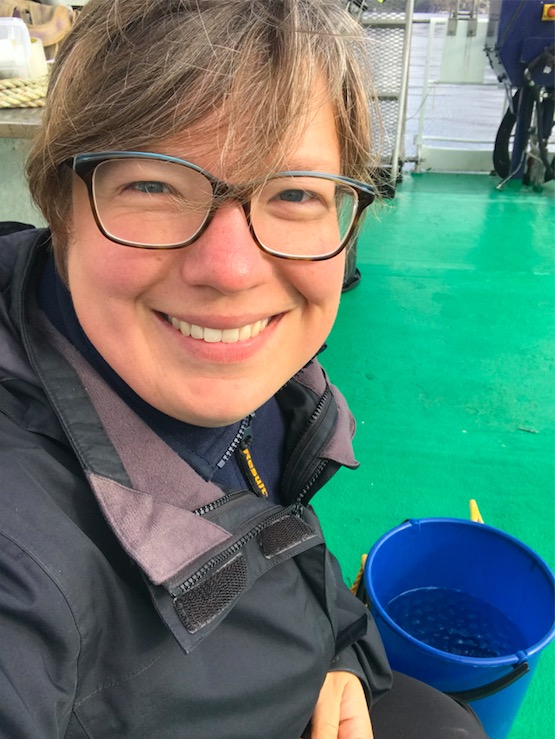
Florian says:
Hi there!
Thank you so much for taking the time to write this.
The videos you took are really nice, especially the slow motion which leads to gorgeous wave patterns. Have you been able to link the vibration frequency of the motor with the patterns? (this could maybe be determined from a sound recording close to location you were filming at)
Do you have any idea why the metal pan couldn’t work? (too heavy to “transmit” energy into it?)
Regards,
Florian
Mirjam says:
Hi Florian,
Thanks for your comment!
I haven’t tried to link the frequency of the engine with the pattern yet, although it’s on my list of things to do on winter evenings when I am sitting on my sofa ;-)
I do have sound for all of the videos (I just muted it because I felt like I didn’t want to force it on people; it’s after all just the noise of the engine), so in theory it should be doable. My guess is that the frequency is the same for all of them, though, since I took the movies when we were on station, and not sailing at different speeds or anything like that (although I took some while sailing, too, and the same pattern showed up). I got the different pattern by moving the bucket around on deck (but within a radius of maybe one meter), so I would guess that what changes is the amplitude of the vibrations, and maybe also how large the horizontal and vertical components are, as we move from parts of the deck that are more structurally supported to some that might vibrate better. But I am just guessing here.
I don’t think the pan is too heavy (after all the ship is steel, too, and it does transmit the energy from the engine to the deck just fine), but I think the bucket was vibrating in itself and deforming, thus amplifying the waves at resonance frequency.
Unfortunately I won’t be back on that ship any time soon, so I can’t play around with it more for now!
Best regards, Mirjam
#BergenWaveWatching: Introducing a new series of blog posts – Elin Darelius & team's scientific adventures says:
[…] used to bring seawater up on the deck for salinity to be measured. And what jumped out on me? The standing waves in that bucket! You see them in the picture below, but what struck me was that most people really didn’t […]
New #WaveWatching series happening over on Elin's blog: #BergenWaveWatching! - Dr. Mirjam S. Glessmer says:
[…] used to bring seawater up on the deck for salinity to be measured. And what jumped out on me? The standing waves in that bucket! You see them in the picture below, but what struck me was that most people really didn’t […]
#BergenWaveWatching: On vibrating surfaces - Adventures in Oceanography and Teaching says:
[…] spotted standing waves in a bucket on the latest GEOF105 student cruise, but in addition to on ships, they can also be spotted for […]
#wavewatching: Standing waves on coffee on a train! - Adventures in Oceanography and Teaching says:
[…] I wrote the blog post on “wave watching in a bucket” a couple of days ago, it strongly reminded me of a movie I had filmed already back in March […]